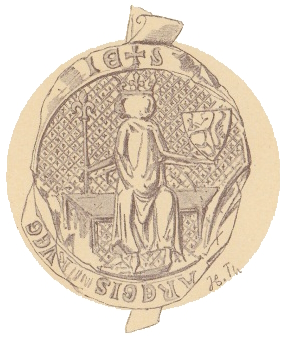| |||||
| Centuries: | |||||
|---|---|---|---|---|---|
| Decades: | |||||
| See also: | List of years in Norway | ||||
Events in the year 1335 in Norway.
| |||||
| Centuries: | |||||
|---|---|---|---|---|---|
| Decades: | |||||
| See also: | List of years in Norway | ||||
Events in the year 1335 in Norway.
| | This section is empty. You can help by adding to it. (September 2012) |
| | This section is empty. You can help by adding to it. (September 2012) |
| | This section is empty. You can help by adding to it. (September 2012) |
Magnus, meaning "Great" in Latin, was used as cognomen of Gnaeus Pompeius Magnus in the first century BC. The best-known use of the name during the Roman Empire is for the fourth-century Western Roman Emperor Magnus Maximus. The name gained wider popularity in the Middle Ages among various European peoples and their royal houses, being introduced to them upon being converted to the Latin-speaking Catholic Christianity. This was especially the case with Scandinavian royalty and nobility.

Gustav Eriksson Vasa, also known as Gustav I, was King of Sweden from 1523 until his death in 1560. He was previously self-recognised Protector of the Realm (Riksföreståndare) from 1521, during the ongoing Swedish War of Liberation against King Christian II of Denmark, Norway and Sweden. Gustav rose to lead the Swedish War of Liberation following the Stockholm Bloodbath, where his father was executed. Gustav's election as king on 6 June 1523 and his triumphant entry into Stockholm eleven days later marked Sweden's final secession from the Kalmar Union.

Albert was King of Sweden from 1364 to 1389 and Duke of Mecklenburg-Schwerin from 1384 to 1412.

Magnus Eriksson was King of Sweden from 1319 to 1364, King of Norway as Magnus VII from 1319 to 1355, and ruler of Scania from 1332 to 1360. By adversaries he has been called Magnus Smek.

Haakon VI, also known as Håkan Magnusson, was King of Norway from 1343 until his death and King of Sweden between 1362 and 1364. He is sometimes known as Haakon Magnusson the Younger to distinguish him from his great-grandfather, Haakon V.

Valdemar Birgersson, also Waldemar, was King of Sweden from 1250 to 1275.

Haakon V Magnusson was King of Norway from 1299 until 1319.

Blanche of Namur was Queen of Norway and Sweden as the wife of King Magnus Eriksson.

Erik Magnusson, sometimes known as Erik XII, was King of Sweden and lord of Scania in 1344–1359. He was a co-ruler with his father, King Magnus Eriksson, from 1356 until his death in 1359.
Magnus Eriksson (1316–1374) was the King of Sweden from 1319 to 1364 and the King of Norway from 1319 to 1355.

Tønsberg Fortress was a medieval fortress and castle, located in Tønsberg, Norway which was defended by the fortress for over 300 years.

Euphemia of Sweden was a Swedish princess. She was Duchess consort of Mecklenburg, heiress of Sweden and of Norway, and mother of King Albert of Sweden. (c. 1338-1412) .

Birger Brosa was the jarl of Sweden from 1174 to 1202.

Ingeborg of Norway was a Norwegian princess and by marriage a Swedish royal duchess with a position in the regency governments in Norway (1319–1327) and Sweden (1319–1326) during the minority of her son, King Magnus Eriksson. In 1318–1319, she was Sweden's de facto ruler, and from 1319 until 1326, she was Sweden's first de jure female regent. Her role in northern European history is considered of major importance.
Beatrix of Bavaria was Queen of Sweden as the wife of King Eric XII of Sweden (1339–1359) who co-ruled Sweden with his father King Magnus Eriksson.
Magnus of Sweden may refer to:
Events in the year 1319 in Norway.
Events in the year 1326 in Norway.

Lindholmen Castle was a medieval castle on the former island of Lindholmen, which is now part of the larger island of Hisingen and lies within the urban area of modern Gothenburg. The castle stood on a rocky outcrop, which is still known as Slottsberget, overlooking the Göta Älv. This was an area of immense strategic significance in the Middle Ages, as at that time Hisingen straddled the Norwegian-Swedish border, and the mouth of the Göta Älv was Sweden's sole point of access to the North Sea.